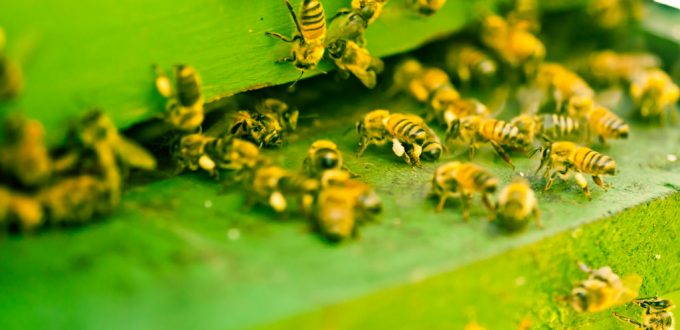
By by Chris “Kikila” Perrin at undergroundreporter.org
The bees are disappearing. It is as simple as that. In what is most certainly an issue that defies political boundaries, the growing prevalence of honeybee colony collapse disorder (CCD) transcends partisan politics and legislative rhetoric. With the honeybee being one of the most important aspects of the human food system, a solution to this mounting problem must be found.
A study published by the United States Department of Agriculture (USDA) earlier this month indicates that roughly 28 percent of American bee colonies were lost just this past winter. More shockingly, the same report shows that nearly half of all bee colonies in the U.S., 44 percent, were devastated over the past year. Despite annual statistics only having been collected for the past six years, current research is showing that bee colonies are failing even during the summer months — a time when colony health is expected.
Unfortunately, the problem is not limited to the U.S. In the U.K., losses of honeybees in the winter of 2014 to 2015, the last year statistics are available, surpassed 14 percent, a number that did not confirm previous findings which seemed to suggest honeybee populations were stabilizing. Apparently, despite European Union attempts to curtail the use of pesticides linked to colony collapse disorder (CCD), such as neonicotinoids, and a decrease in instances of CCD during the winter of 2013-2014, bee populations have not remained steady. Rather, after the lull of 2013-2014, the decline has continued.
Banning pesticides and performing more in-depth, longitudinal studies are beginning to show results, however. Regrettably, these results only benefit our knowledge of the issue and, apparently, have done little to either slow the decline in a sustainable manner or refute detractors who feel that there is no crisis at all. Yet that knowledge is an important place to start.
Earlier this year, the Environmental Protection Agency (EPA) admitted that neonicotinoids have been linked to CCD. Problematically, and despite a court ruling, it is taking some time to put this knowledge into practice. While the E.U. banned the use of neonicotinoid-based pesticides in some instances in 2013, the USDA has yet to follow suit.
With the problem growing, and with no sign of things fixing themselves, statistics from this past winter might, at the very least, lead to more discussion on the matter. And that could lead to more serious research into finding a viable and sustainable solution to restoring bee populations.
Last year, President Obama created a task force with the sole purpose of solving the problem of CCD, bridging agencies together to combine their efforts. It is through such collaboration that this most recent study was made possible.
A solution, when it is found, will not come from any one source. A problem as multifaceted as CCD will need an equally complex fix; and the more people, agencies, groups, and nations working towards this issue, the better. Finding a way to stabilize bee populations will also take time — time we might not have at the current rate of colony decline.
Working together, however, might speed up the process — and it is here that inter-agency task forces and international communication might possibly be the keys to discovering a breakthrough that will keep our most important pollinators around a little longer.
This article (Nearly Half the Nation’s Bee Colonies Wiped Out in Just One Year) is free and open source. You have permission to republish this article under a Creative Commons license with attribution to Chris “Kikila” Perrin and UndergroundReporter.org. If you spot a typo, please email the error and the name of the article to [email protected]. Image credit: Flickr/David Goehring





“A solution, when it is found, will not come from any one source. A problem as multifaceted as CCD will need an equally complex fix.” Actually it’s not multifaceted and complex at all, the problem is right under our nose, it’s called Neonicotinoid poisoning.